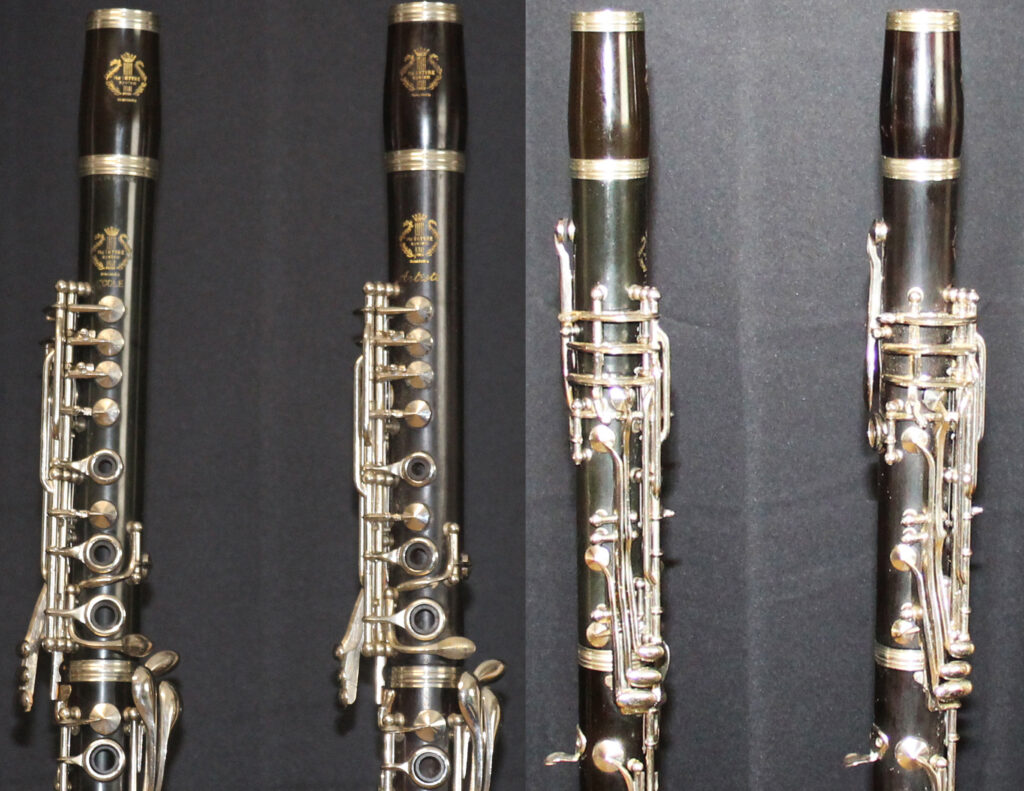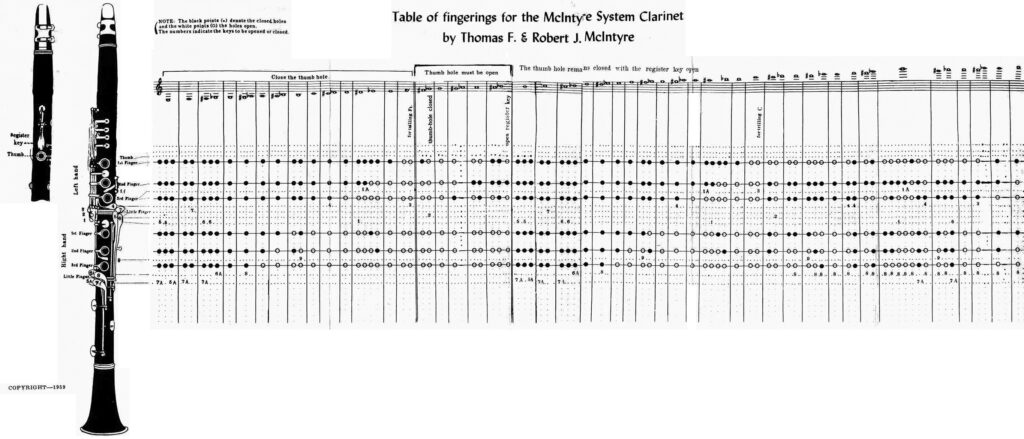
McIntyre System Clarinets made by Thibouville Frerés, Paris
Thomas F. and Robert J. McIntyre of Thomaston, Connecticut, were granted U.S. patent 3,015,981 for “Clarinets” on January 9, 1962. According to their application, filed on September 9, 1958, their “invention relates to a new and useful key mechanism for clarinets, that simplifies the playing of the instrument, by eliminating many of the difficulties in fingering, which are inherent in the present system.”
All of the McIntyre’s innovations are applied to the upper section of the clarinet and are to be fingered principally with the left hand. The bottom section is unchanged and is fingered exactly like a regular Boehm System instrument. The upper section has conventional tone holes for the low register notes D, E, and F. This section also has tone holes for throat-tones G-sharp, A, and B-flat in alignment with the aforementioned conventional tone holes. Ring keys are associated with the D, E, and F tone holes. Pads are associated with the G-sharp, A, and B-flat tone holes. There is a complicated mechanism—a system of springs, rockers, and adjoining and overlapping segments—that connects the rings and pads. There are no conventional left-hand keys for throat G-sharp and A.
The result is new fingering for the throat tones. According to an advertising flyer from 1959, the McIntyre System makes possible fewer finger movements, since the left-hand fingers remain on the “home row” ring keys in playing all the throat tones. The left-hand first finger does no shifting at all to reach the G-sharp and A keys and there is no awkward thumb motion required to play throat B-flat. Citing Rosario Mazzeo’spatent of 1959, the McIntyres describe an enlarged B-flat tone hole, such that the tone on the B-flat is rich and powerful. Unlike Mazzeo’s model, which retains the traditional way of fingering B-flat, as well as the new and improved fingering, the McIntyre’s new B-flat fingering is used at all times.
To obtain G-sharp on the McIntyre System, the left-hand ring finger covers the third tone hole, which depresses the ring, thereby activating the mechanism that opens the new G-sharp-pad key. A is played by adding the middle finger to the second tone hole, or is used simply by itself. To obtain B-flat, the index finger is added to the first tone hole. There are two other options for B-flat: the first and second tone holes can be used alone or the second tone hole and register key can be used. Since there is no side key for G-sharp, realizing that this key is normally used for a trill between F and G, the McIntyre’s supplied their clarinet with a new right-hand side key for this trill.
